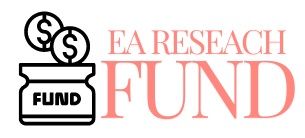Creative Real Estate Financing Hacks: Outside the Box Options

If a person is ready to purchase real estate, but need capital, they may look to some of the more traditional financing options. However, there are more creative financing solutions that may be a better fit. Keep reading to learn more about the creative financing options and which ones may be smart for a buyer here.
Cash out Refinance
The cash out refinance for real estate is a type of transaction where a person can tap into the equity in their home. With this, they borrow enough to pay off the existing mortgage and then keep the difference. This provides funds to make investments elsewhere. What’s even more important about this is that the cash out refinance process is one of the smartest options available, if a person knows what they are getting into.
This funding option is different from a simple line of credit, which is something someone does by adding a second mortgage to their home to take cash out of. The interest terms on this financing option are more favorable than more traditional home equity loans. Also, unlike borrowing funds from a hard money lender, the interest on the cash out refinance is completely tax-deductible.
A Home Equity Line of Credit
Unlike the cash-out refinance, the home equity line of credit means that a person isn’t paying off their entire mortgage. Instead, they are borrowing against the value of the home – as much as 80 percent of the total home value, minus the total amount of the mortgage.
The HELOC will typically have a draw period, which usually lasts around 10 years, along with a repayment period, which is no longer than 15 years. Similar to the cash-out refinance, the HELOCs interest is tax-deductible, but this is only true for up to $100K.
Personal Loans
While personal loans don’t have the same tax benefits offered by the HELOC or refinancing, there are a few compelling reasons to think about this, along with other more creative financing techniques. With this option, a person isn’t required to use their house as collateral. In some situations, a person may not even have to put up collateral at all.
Also, the repayment terms are shorter than a typical mortgage loan. The five to seven-year range is a good benchmark. As a result, the borrower will pay much less interest over the term of the loan.
However, with the shorter repayment term comes a bigger monthly payment. Also, most people will have to have great credit to qualify for personal loan. Still, if the individual has good credit, but little equity in their home, it can be an effective mode of financing real estate.
When it comes to real estate financing options, there are more than a few to consider. Keep the information here in mind to ensure the desired results are achieved. More information can also be found by those who are interested by visiting Dustin Dimisa’s website. Being informed is the best way to ensure the right steps are taken to secure the financing needed for a real estate purchase.








